Sony WH-1000XM3 vs. Sony WH-1000XM4: Noise-cancelling headphones face-off
Which Sony noise-cancelling headphones are better?
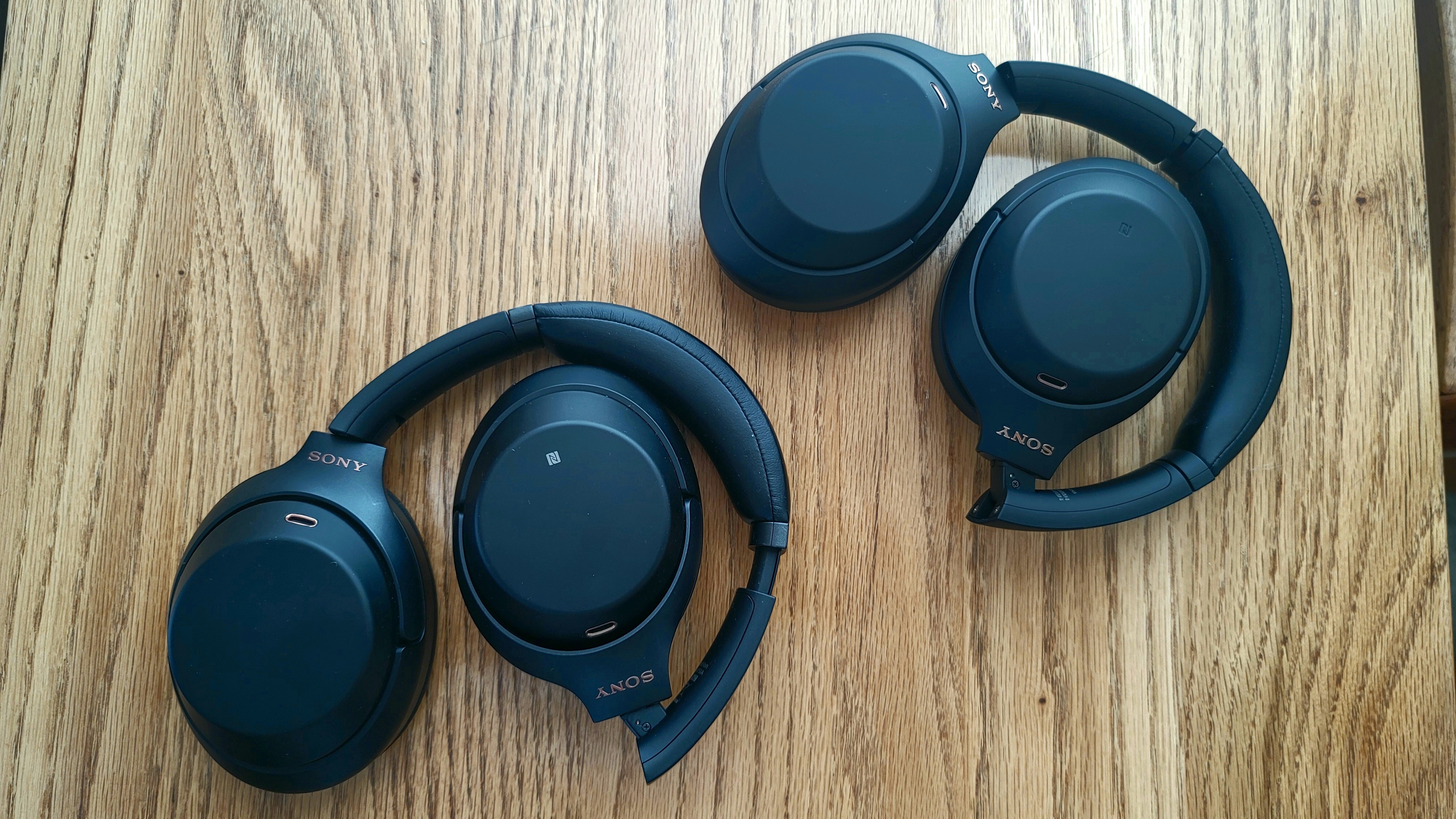
Just because the Bose 700 is considered the most popular noise-cancelling headphones doesn’t mean the category is limited on elite selections. As a matter of fact, the Sony WH-1000XM3 and Sony WH-1000XM4 remain two of the market’s top sellers; both deliver grade-A performance at a lower MSRP than most other luxury models.
Three years older, yet still highly functional, the WH-1000XM3 continues to show that it can challenge the market’s latest and greatest. Superb sound combined with Bose-challenging active noise cancellation and strong battery life, these cans helped set the standard for ANC on Sony headphones, as well as the Sony WF-1000XM4 wireless earbuds.
- Best noise-cancelling headphones in 2021
- Here are the best wireless headphones, per budget and style
- Best cheap headphones deals
The WH-1000XM4 was given a 4.5 out of 5-star rating from Laptop Magazine, earning an Editor’s Choice badge for its superior audio, ANC, and playtimes. It also welcomes improvements in connectivity and call quality, while introducing new features, which we’ll discuss further in our analysis.
As stellar as both options are, only one is walking out of this battle with a victory. Check out our in-depth look comparing the WH-1000XM3 and WH-1000XM4, which breaks down the better noise-cancelling solution.
Sony WH-1000XM3 vs. Sony WH-1000XM4: Price
These two pairs of ANC headphones each launched at the same price: $349. The good news is that both models are on sale right now. Several online retailers continue to discount the WH-1000XM3 and WH-1000XM4, with the former being sold for as low as $205 on Amazon and the latter being dropped down to $298 on Amazon. Talk about generous markdowns.
Take features, performance, and the $145 discount into account, the WH-1000XM3 looks like the more enticing deal. But don’t think for one second that the WH-1000XM4 isn’t worth every penny either.
For all of the latest Sony headphones deals, we advise bookmarking our Amazon Prime Day 2021 and best headphones deals pages.
Sign up to receive The Snapshot, a free special dispatch from Laptop Mag, in your inbox.
Winner: Sony WH-1000XM3
Sony WH-1000XM3 vs. Sony WH-1000XM4: Specs compared
| Header Cell - Column 0 | Sony WH-1000XM3 | Sony WH-1000XM4 |
|---|---|---|
| Price | $349.99 | $349.99 |
| Size and weight | 10.4 x 7.3 x 2.9 inches, 9 ounces | 9.9 x 7.3 x 3 inches, 9 ounces |
| Battery life | 30 hours (ANC on), 38 hours (ANC off) | 30 hours (ANC on), 38 hours (ANC off) |
| Processor | Sony HD Noise-Canceling Processor QN1 | Sony HD Noise-Canceling Processor QN1 |
| Connectivity | Bluetooth 4.2, NFC | Bluetooth 5.0, NFC |
| Special features | Active noise cancellation, adjustable ambient listening, smart controls, tri-digital assistant support, customizable EQ, NFC, High-res Audio support, Sony 360 Reality Audio | Active noise cancellation, adjustable ambient listening, smart controls, tri-digital assistant support, multipoint technology, Speak-To-Chat functionality, customizable EQ, NFC, High-res Audio support, Sony 360 Reality Audio |
Sony WH-1000XM3 vs. Sony WH-1000XM4: Design

It’s easy to mistake one for the other. Sony practically left the packaging untouched, which can make it confusing to pick the right model unless you identify the model number on the front of the box. If you look more closely, there are subtle differences between the WH-1000XM3 and WH-1000XM4.
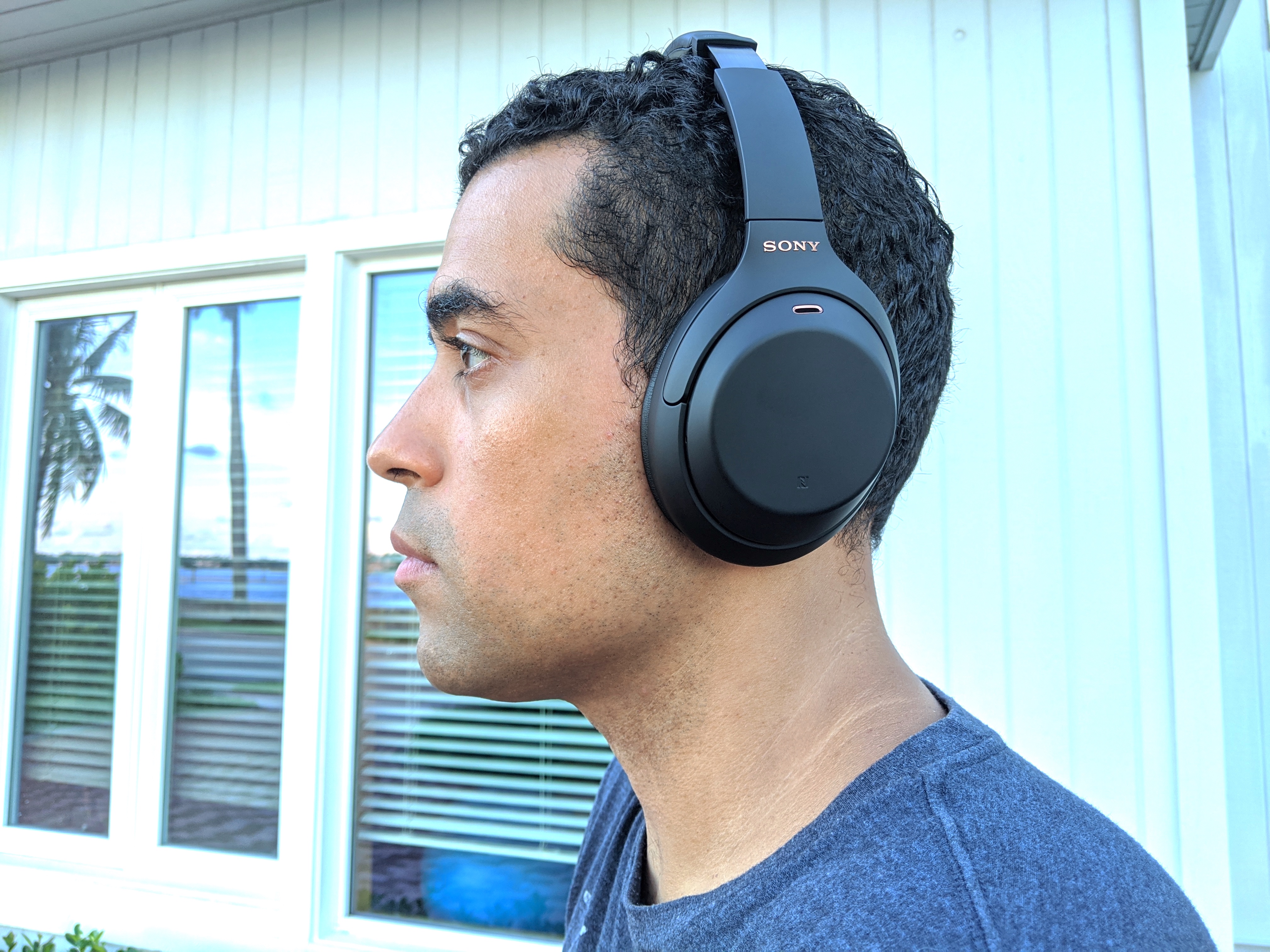
These two pairs of headphones boast minimalist and luxe designs composed of aluminum (yokes), refined leather (headband and earcup padding), and sturdy plastic (earcups). You will also notice elegant details like copper accents, an embossed Sony logo, and the laser-etched model number above the yokes. We like the marginal upgrades Sony implemented on the WH-1000XM4, such as the sleek, soft-touch rubber finish that handles scratches and scuffs better than the WH-1000XM3’s plastic surface. The WH-1000XM3 is an attractive piece of audio hardware. Unfortunately, Sony dropped the ball when ditching the WH-1000XM2’s rugged, leathery earcups.
Colorways are exactly the same (Black and Silver), though Sony did introduce two new options for the WH-1000XM4 over the past several months: Midnight Blue and Silent White.

Weight is equal at 9 ounces and though the WH-1000XM3 is slightly longer in size, it is unnoticeable. You can wear either product on your skull for about 3 hours before fatigue sets in, or prop them around the neck, carefree. Sony says it redesigned the WH-1000XM4’s earcups to provide a 10% greater surface for more contact with the head. The decision paid off because the extra padding feels pleasant on the ears and offers more ventilation.
Winner: Sony WH-1000XM4
Sony WH-1000XM3 vs. Sony WH-1000XM4: Controls
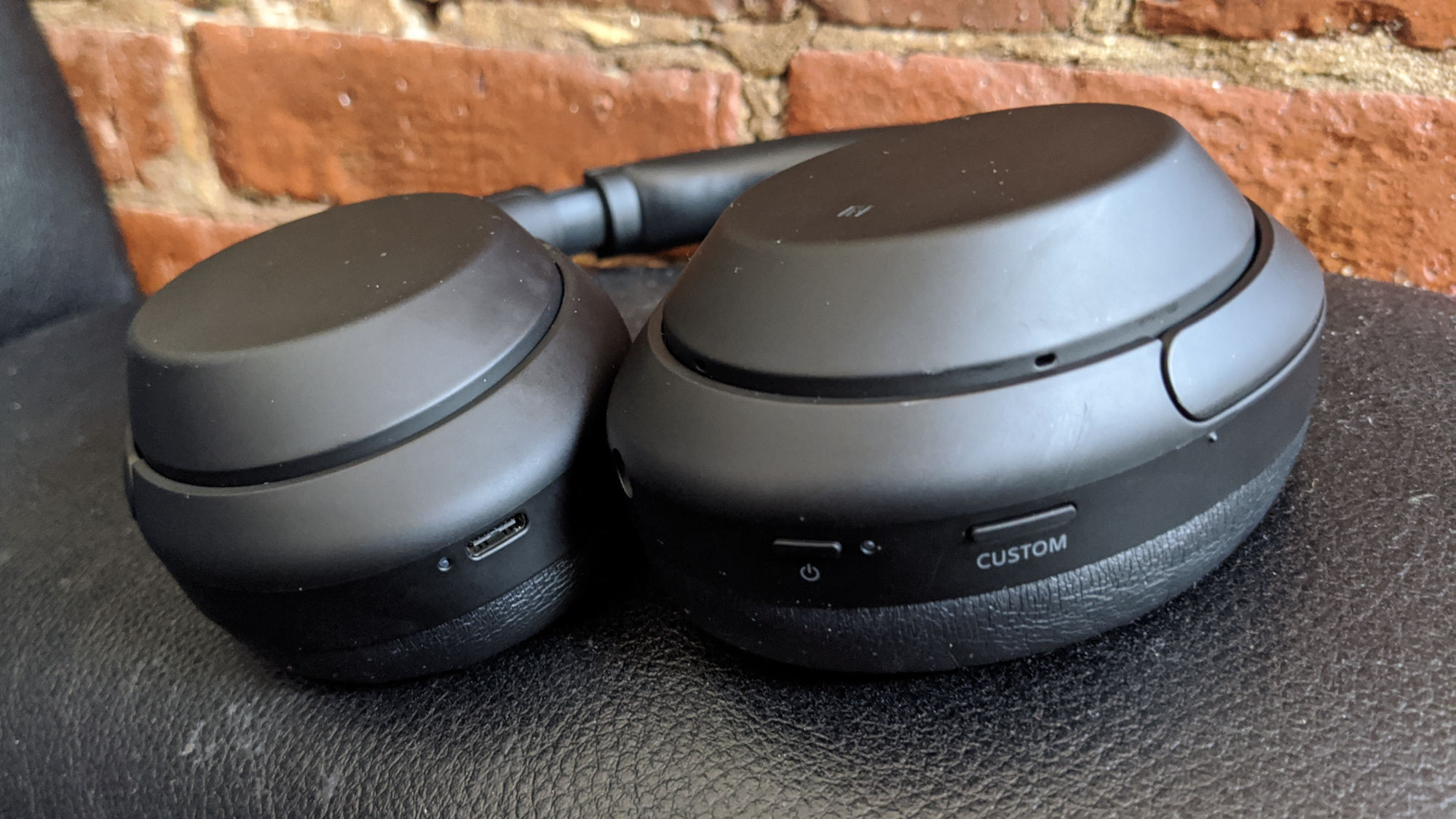
Physical buttons, touch panels, motion detection, and microphones make up the full control scheme on these two pairs of cans. The swipe, slide, and tap gestures are accurate for seamless playback and call management. Pressing either the power or custom button produces nice tactile feedback to ensure users of intended commands. Quick Attention is also available to pause music when placing your hand over the right earcup, though the feature operates smoother on the WH-1000XM4.
Sony gives the WH-1000XM4 a few extra smart features that make using the headphones more fun and practical. On-ear detection is one of them and works similarly to Quick Attention, except that music will pause whenever taking off the headphones and resume when placed back on the head. The second is Speak-to-Chat, a special mode that employs the mics and advanced signal processing to recognize your voice and pause music. Both of them work incredibly well.
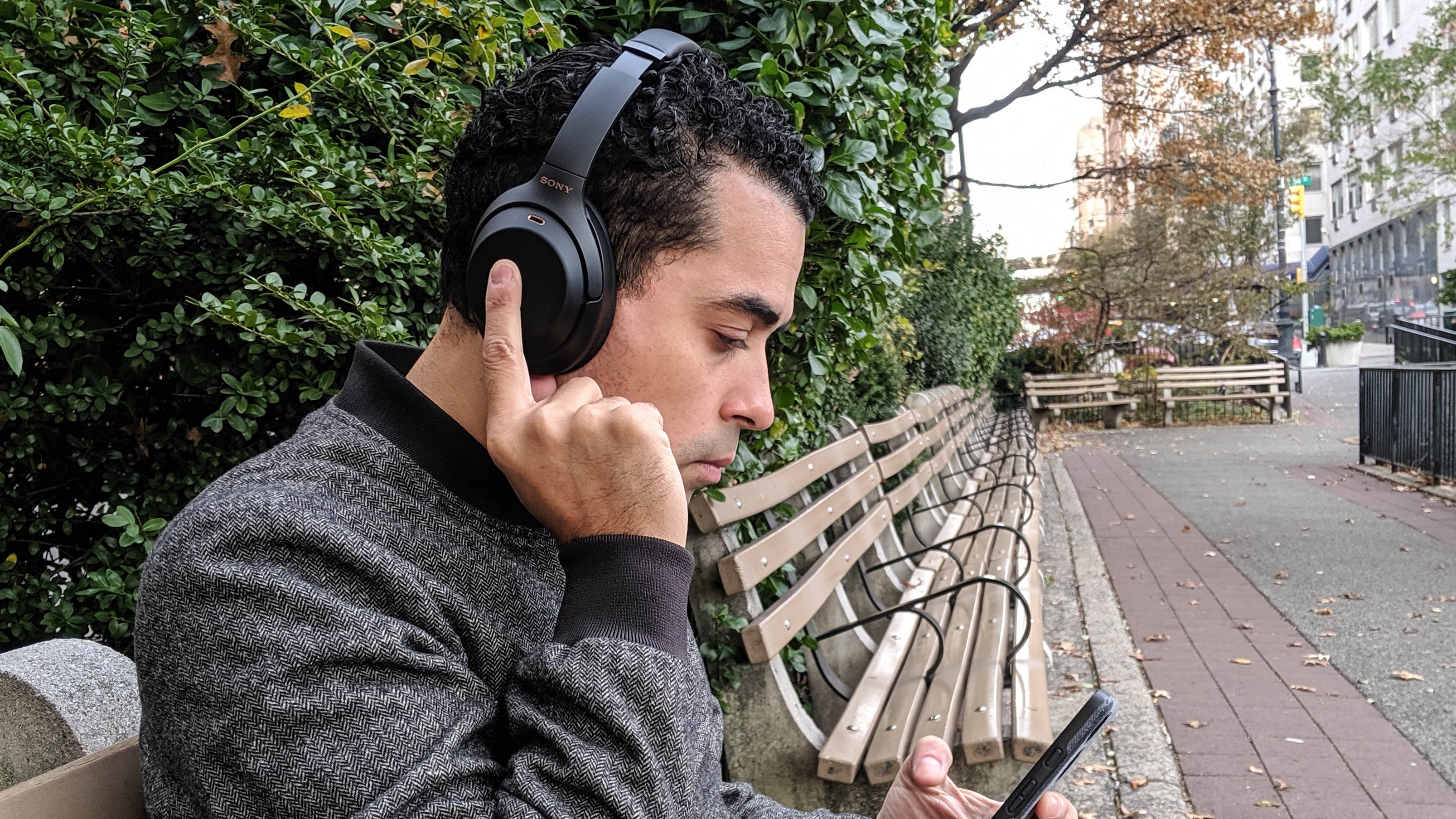
The WH-1000XM3 and WH-1000XM4 come with Google Assistant and Alexa integration. Siri is also available. All of these AI bots work well to fire off voice commands and receive quick results. Sony added Precise Voice Pickup technology on the WH-1000XM4 that uses five mics with advanced audio signal processing to clear the pathway for voice commands to be recognized accurately, and it is terrific for voice assistance.
Winner: Sony WH-1000XM4
Sony WH-1000XM3 vs. Sony WH-1000XM4: Active noise cancellation
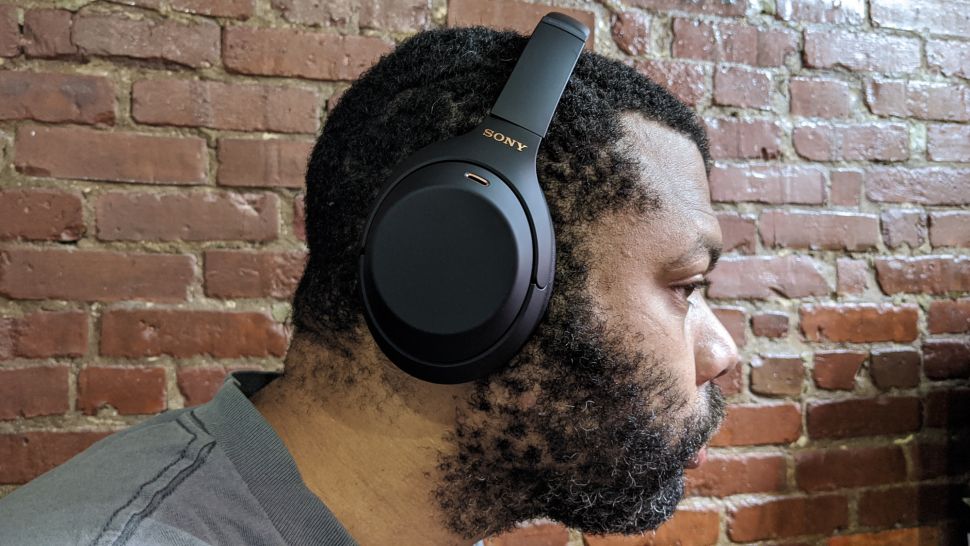
Only those with detailed hearing will notice a difference in ANC performance on either model. Sony’s HD Noise Cancelling Processor QN1 chip with Dual Noise Sensor technology and feedforward mics do a fantastic job of analyzing and filtering out external sound. Even better is that Sony programmed special modes to customize noise cancellation on the fly. One of them is NC Optimizer, which optimizes ANC based on various factors such as the shape of your ears, hairstyle, eyewear presence, and the ambient noise around you. The other is Atmospheric Pressure Optimization that adjusts pressure and sound delivery accordingly to altitude.
Pre-pandemic, the WH-1000XM3 and WH-1000XM4 accompanied us on many flights, so we can attest to how great Sony’s noise-cancelling technology performs in the air; you’ll barely hear only the low-end rumble on an airplane. Being on the ground is just as rewarding with either headphone putting a kibosh on mid-low frequencies while minimizing loud noises at an incredibly high level. Blaring sounds (e.g., blow horns, sirens, loud sound systems) do creep onto the soundscape, but unless happening a few feet away, they aren’t distracting enough to pull you away from whatever is playing.

Where the WH-1000XM4 has an edge is ambient listening. Yes, you’re still afforded 20 levels of adjustable transparency levels no matter the model, but the WH-1000XM4’s mics are stronger and make external sounds more distinctive to enhance environmental awareness.
Winner: Sony WH-1000XM4
Sony WH-1000XM3 vs. Sony WH-1000XM4: Audio Quality

The Sony Mark series is known for delivering best-in-class sound. Be it the WH-1000XM3 or WH-1000XM4, expect dynamic and vibrant audio to bounce off your eardrums. Had it not been for the small tweaks made to the WH-100XM4’s sound profile, this round would have resulted in a tie.
Sony raised the bass levels on its flagship model, emphasizing lows for boom-tastic sound. 808s and snares hit harder and don’t muddy up the soundstage. This is perfect for contemporary music genres like EDM, hip-hop, and alternative rock. Be that as it may, the WH-1000XM3 and WH-1000XM4 both lend themselves well to all musical genres. Mids and highs are well represented and blend nicely with bass. Background instruments are distinguishable when listening to recordings with complex arrangements. Turning ANC on won’t affect quality either, as you’ll still receive excellent reproduction and stereo imaging.

The WH-1000XM3 supports more codecs: aptX, aptX HD, AAC, LDAC, and SBC. Why aptX was left off of the WH-1000XM4’s spec sheet is a mystery, but at least the other three are available, along with DSEE Extreme and Edge-AI technologies to boost the fidelity that was lost with digitally compressed files.
Winner: Sony WH-1000XM4
Sony WH-1000XM3 vs. Sony WH-1000XM4: App and special features
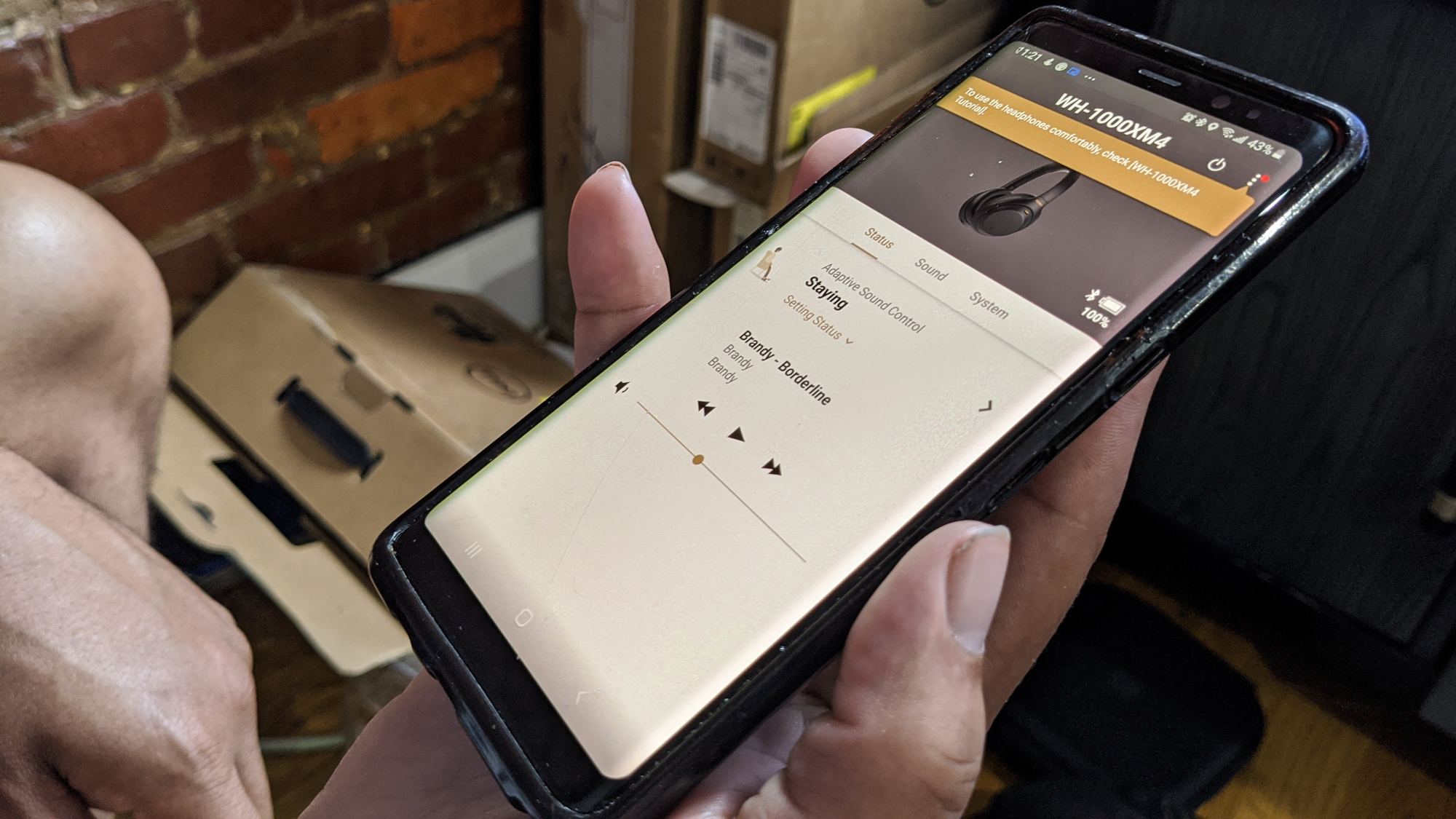
At the center of functionality is the Sony Headphones Connect app, which is compatible with most of Sony’s wireless headphones and earbuds. Here is where you’ll find a customizable EQ with multiple music presets, adjustable ambient levels, Adaptive Sound Control, NC Optimizer, and Sound Position Control to emphasize sound in different positions. Firmware updates can be pushed through in the app as well.
Then there is Sony’s all-new immersive sound format, 360 Reality Audio, that brings 3D effects to your music. Think of this as Sony’s answer to Apple’s spatial audio, only it doesn’t use head-tracking to produce surround sound. The results are pretty impressive, allowing you to hear individual elements from different points, sort of like if you were sitting in an auditorium watching an orchestra play on stage. You can hear the string section coming from your left and the brass section coming from the right, along with the audience to simulate the feeling of being in the crowd.
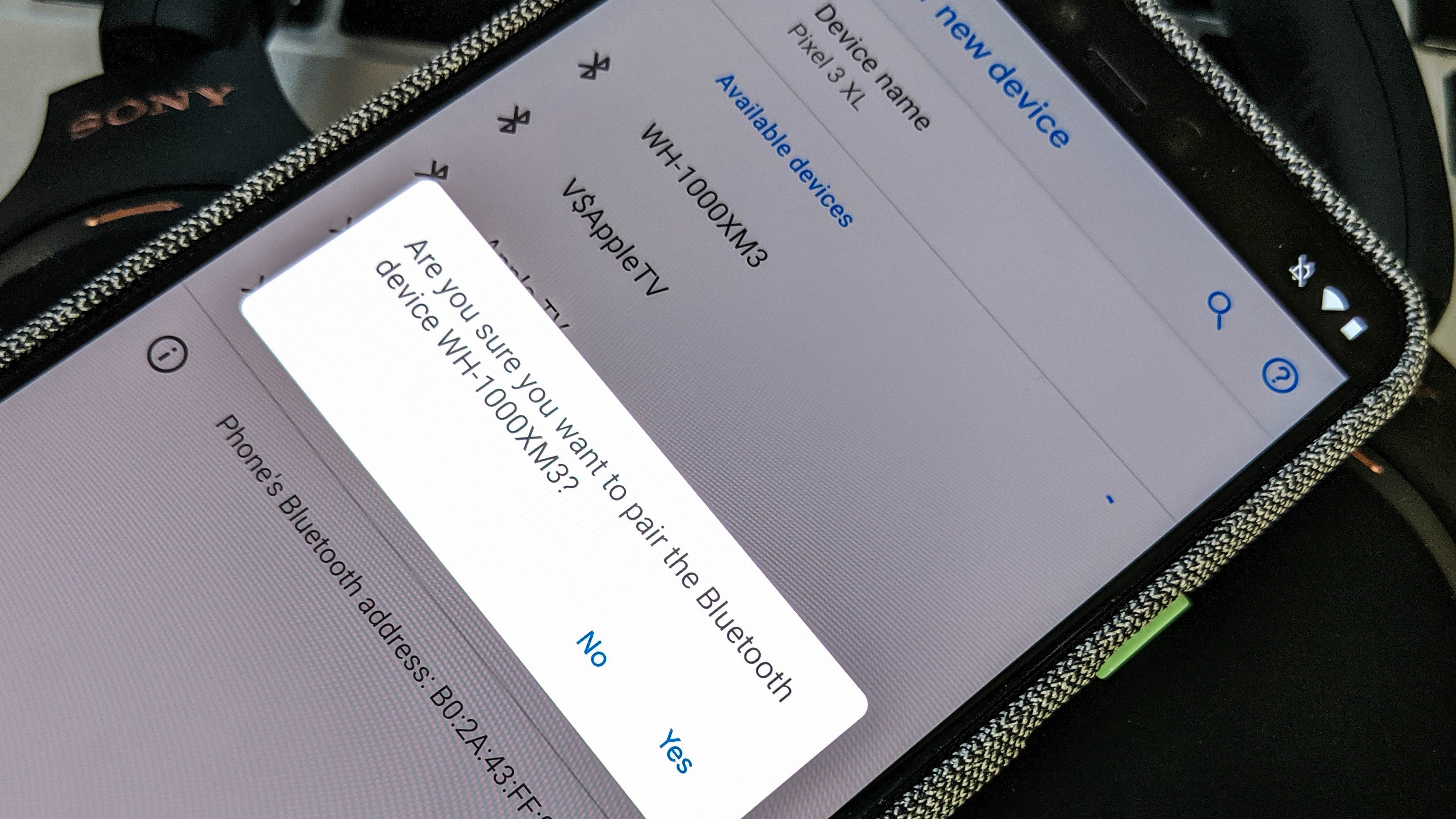
As for extra features, NFC is here and makes pairing seamless on either set of headphones by tapping the left earcup on the back of a compatible smartphone.
So, why does the WH-1000XM4 win this round? Bluetooth 5.0 and multipoint technology. Not only do the latest headphones support a more modern wireless protocol, but also being able to pair and switch between two devices at the same time is useful. Connectivity and range are solid on the WH-1000XM3, much like the WH-1000XM4. The issue is that Bluetooth 4.2 lacks the speed and range of Bluetooth 5.0.
Winner: Sony WH-1000XM4
Sony WH-1000XM3 vs. Sony WH-1000XM4: Battery life
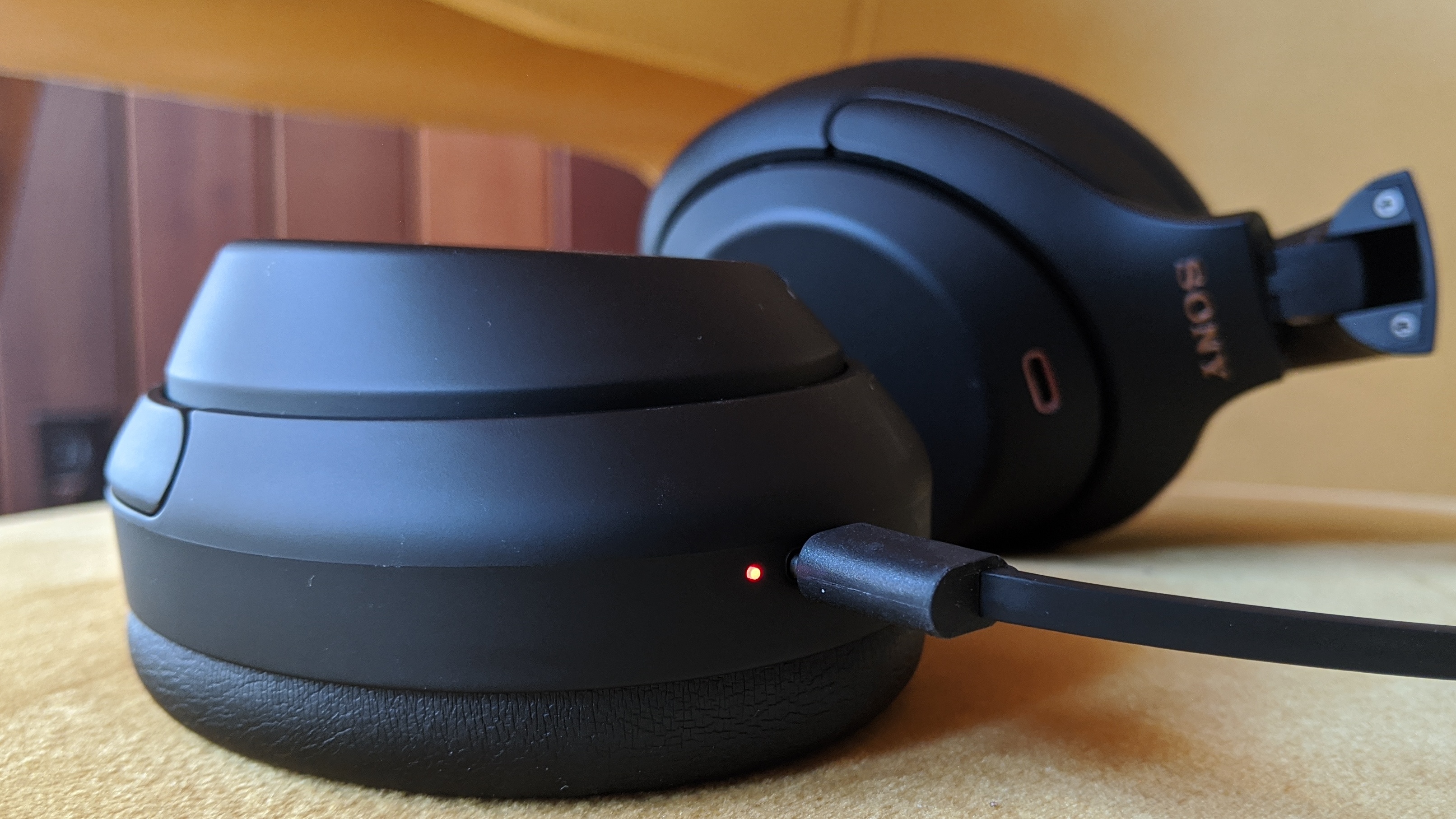
Battery life is no different between these two powerhouses, as a full charge earns you 30 hours of ANC playback and 38 hours with the feature turned off. By comparison, that is 10 hours more than rivals like the Bose 700 and AirPods Max, which both max out at 20 hours with ANC on. Factor in volume, streaming, and multiple features running in the background, and playtimes drop by about 1.5 hours.
Where the differences lie between these two models are charging inputs and quick charging. The WH-1000XM4 has a USB-C port and can net you 5 hours on a 10-minute charge, whereas the WH-1000XM3 has a micro-USB port and only gets you 70 minutes on a 10-minute charge.
Winner: Sony WH-1000XM4
Sony WH-1000XM3 vs. Sony WH-1000XM4: Call quality and connectivity

If you’re looking for headphones that serve well for home office use, sure, either the WH-1000XM3 or WH-1000XM4 will suffice. For personal calls around the house or outside, not so much. The WH-1000XM4 is the better calling headset, but despite being an upgrade, the results aren’t noteworthy. All calls sound loud, but not crisp, and some clients and friends complained about audio being choppy.
Note: The latest firmware update (2.4.5) apparently “improves the hands-free calling quality,” though we still notice some muffling during calls.
The WH-1000XM3’s mics pick up a lot of ambient noise, making it difficult to communicate over the phone or on video chats. Wind resistance is the biggest culprit, producing a harsh whoosh effect that is harmful to your hearing.
Winner: Sony WH-1000XM4
Sony WH-1000XM3 vs. Sony WH-1000XM4: Winner
Enough changes were applied to the WH-1000XM4 to make it worth the extra coin. Sound is arguably the best in the category, while noise cancellation and battery life also rank highly. Music lovers have a plethora of personalized features to play with in the Sony Headphones Connect. New additions like Bluetooth 5.0, multipoint technology, and Precise Voice Pickup enhance the wireless experience as well.
| Header Cell - Column 0 | Sony WH-1000xM3 | Sony WH-1000xM4 |
|---|---|---|
| Value (5) | 5 | 4 |
| Design (15) | 12 | 13 |
| Controls (10) | 7 | 8 |
| Active noise cancellation (20) | 17 | 18 |
| Audio quality (15) | 14 | 15 |
| App and special features (15) | 12 | 13 |
| Battery Life (10) | 8 | 9 |
| Call quality and connectivity (10) | 5 | 6 |
| Total Score (100) | 80 | 86 |
Outside of call quality, there is very little to complain about regarding the WH-1000XM3. Three shopping seasons in and it is still viewed as a brilliant option for budget audiophiles who want great ANC and sonic prowess. Access to Sony’s companion app means you’re getting most of the same features as its successor. That sale price is super enticing as well, though the fresher design and updated specs make the WH-1000XM4 the more future-proof model and a better investment.
Alex Bracetti writes about all things related to audio at Laptop Mag. From insightful reviews of Sony earbuds to hands-on experience with the Beats Studio Pro, Alex covers everything you need to know in order to buy the best pair of headphones or earbuds. Alex has also written about speakers and audio apps. Outside of Laptop Mag, Alex's work has appeared in our sister site Tom's Guide.
